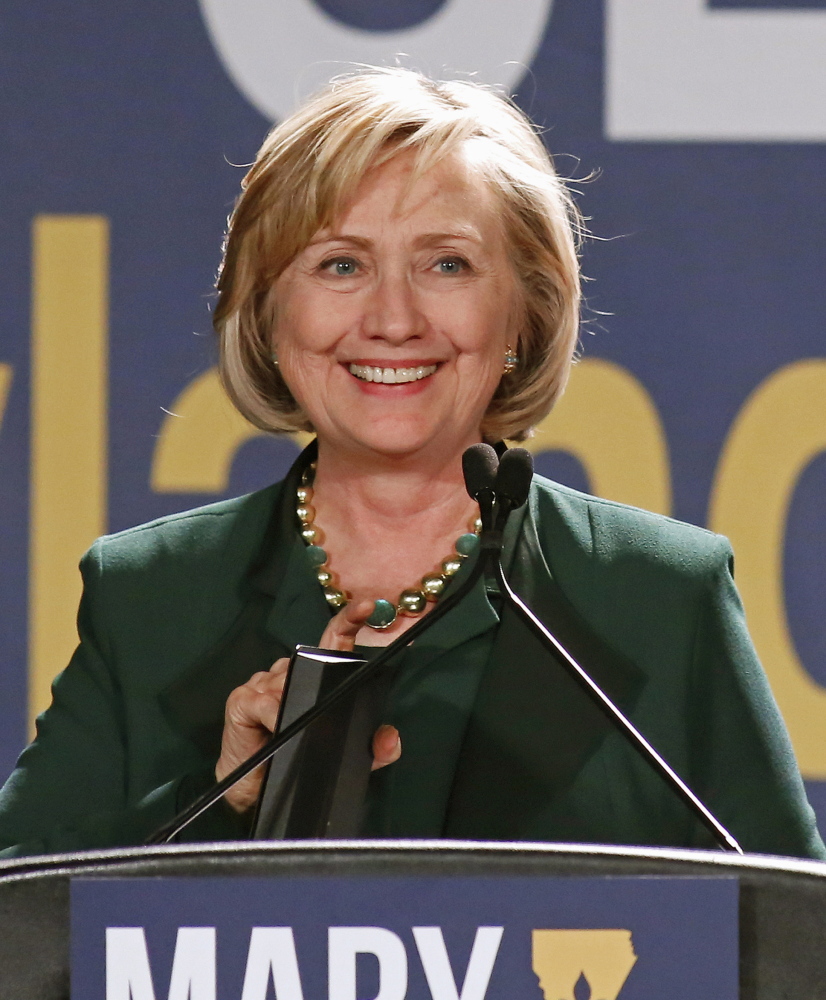As they awoke Wednesday, Democrats found many ways to soften the sting of the shellacking they took Tuesday night. The Senate map was bad. The party in the White House always suffers in midterm elections. Demography is still on their side in presidential elections.
However true, those efforts to find silver linings after a storm of repudiation ignore larger questions for the party: As Democrats look toward 2016, just who are they and what do they stand for? Are they a party that narrowcasts messages to select constituencies – think “war on women” – and speaks largely in the language of fear? Or are they a party whose leaders can articulate a big, fresh and positive message?
Much has been made about the absence of a Republican governing agenda in this year’s campaigns. Democrats combing through results from Tuesday and from exit poll crosstabs can point to the fact that on some issues, the public clearly does favor them. But the small-bore issues on which Democrats tried to wage the campaign proved insufficient for the task of winning.
Raising the minimum wage is an example. The idea is hugely popular, but it did nothing to save Democratic candidates in what were supposedly contested races. Voters in Arkansas approved an increase in the minimum wage and at the same time tossed out Sen. Mark Pryor, a Democrat, by a margin of 17 points.
Democrats will write off the Pryor loss as another example of the Republicans tightening their grip on the South, but no Democrat would have told you two days ago that Pryor would lose by the margin he did. Voters in Arkansas also traded a retiring Democratic governor for a new Republican one. Backing the minimum wage didn’t help in other places, either.
If Democrats had a bigger, more appealing economic message, it was as hidden this fall as the Republicans’ governing agenda. The party is split between its centrist-business wing – long dominated by the Clintons – and its populist wing, now embodied by Sen. Elizabeth Warren of Massachusetts.
One part of the party wants to attack Wall Street and tax the rich; the other is wary of that approach but nervous enough about the political impact of wage stagnation, income inequality and the restlessness on the left that it has not formulated a clear alternative, if it truly believes there is one.
Hillary Rodham Clinton, already the presumed Democratic presidential nominee, got so bollixed up over this that she misfired at a campaign stop just days before the midterms by declaring that businesses do not create jobs. She later blamed her mistake on trying to shorthand her message.
Democrats looking toward 2016 have reasons to think optimistically. They are more in tune with the rising electorate – young people, minorities, unmarried women – than Republicans. On social issues such as same-sex marriage or legalization of marijuana, their coalition already or soon will represent the majority position in the country. They are on the side of public opinion on climate change and immigration reform.
The electoral map still looks better for them than for the Republicans. Eighteen states and the District of Columbia have voted for the Democratic nominee in six consecutive presidential elections. Together, they total 242 of the 270 electoral votes needed to win the White House.
Send questions/comments to the editors.



Success. Please wait for the page to reload. If the page does not reload within 5 seconds, please refresh the page.
Enter your email and password to access comments.
Hi, to comment on stories you must . This profile is in addition to your subscription and website login.
Already have a commenting profile? .
Invalid username/password.
Please check your email to confirm and complete your registration.
Only subscribers are eligible to post comments. Please subscribe or login first for digital access. Here’s why.
Use the form below to reset your password. When you've submitted your account email, we will send an email with a reset code.